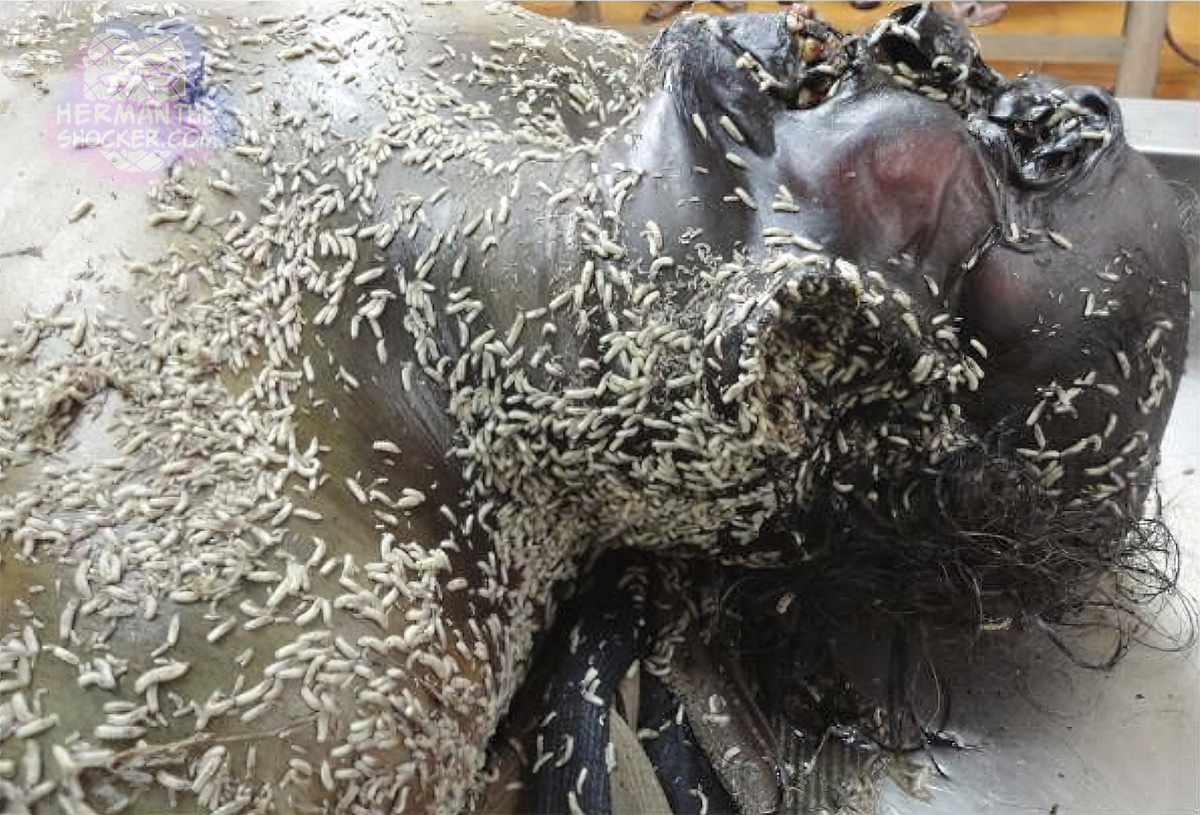Maggots are the larval form of flies. Flies lay their eggs in small and sometimes large bulky clusters on accessible unsubmerged areas, crevices, and cavities of the body, preferring moist areas such as the eyes, nostrils, scalp, lips, ear canals, and open wounds. Individually, these are tiny, round to ovoid, tan-white structures that resemble seeds or grains of rice.
Egg laying occurs within 1–2 hours of death. The mobile larvae will be noted by approximately 24 hours, depending on the species. If undisturbed on land, within 2–3 weeks, they will pupate, forming a hardened brown outer covering remaining on or around the body or burrowed within the surrounding soil.
Maggots will enter anatomic openings, wounds, and body cavities and feed off of the body tissues and organs. Maggots feeding on the skin may leave multiple, small, round (2–4 mm in diameter) holes, leaving a lace-like or web-like pattern on the skin that may be misinterpreted as antemortem blunt, sharp, or other penetrating injuries. With time and if left undisturbed, masses of maggots will completely consume the flesh and expose the bones (skeletonization). Their activities constitute a type of anthropophagy.
Latest posts








